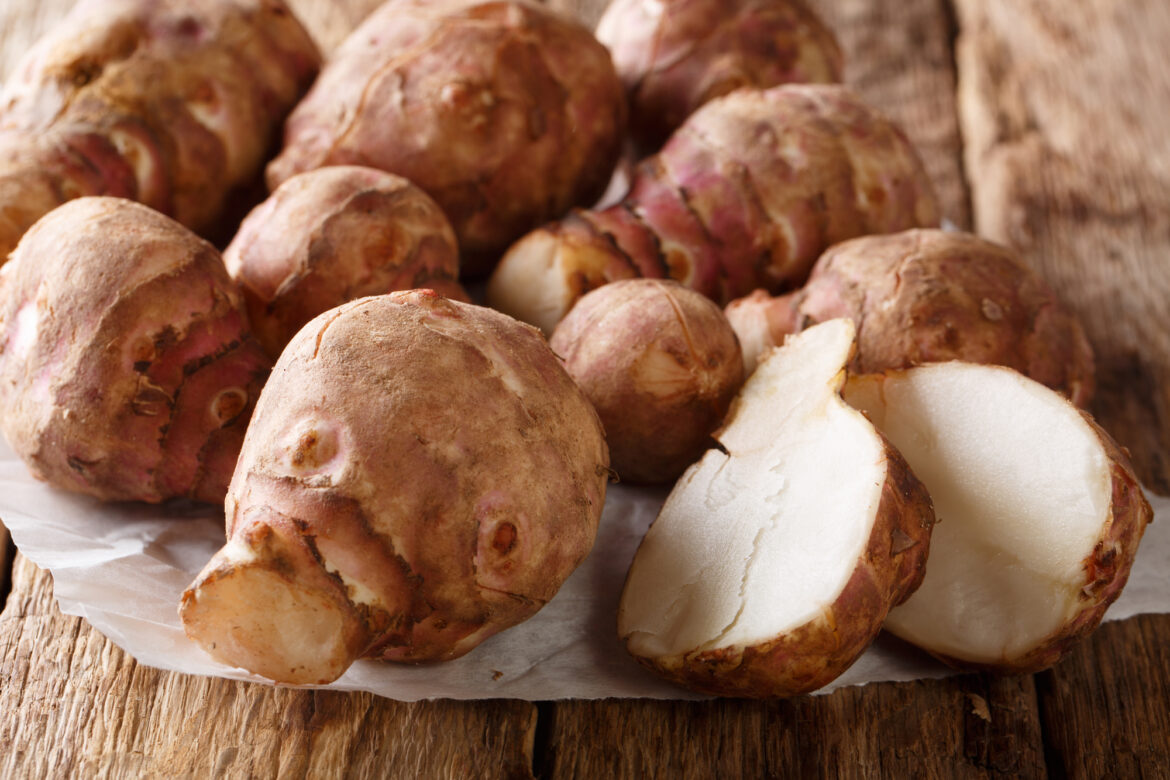History of the Jerusalem artichokes
Do you know what kind of food ingredient the Jerusalem artichoke, also known as the sunroot, is? Some people may have never heard of it before.
Although sunroots have recently been gaining popularity as a healthy food ingredient, it has a long history that is closely related to Japanese dietary habits. On this page, we will explain what kind of food Jerusalem artichoke is and its history.
Jerusalem artichokes are not potatoes
Although the kanji (Japanese characters) of Jerusalem artichokes may seem like a type of potato, Jerusalem artichokes belong to the sunflower family, Asteraceae, making them a completely different plant from potatoes. It may also confuse people because although the kanji may seem like potatoes, the plant looks more like ginger. They are called Jerusalem artichokes because they bloom flowers that resemble chrysanthemums and have roots that look similar to potatoes, hence the name “Jerusalem artichokes”.
Origin of Jerusalem artichokes
Jerusalem artichokes are believed to have originated from North America and inhabited the region from present-day Canada to New York. They were discovered when the Europeans saw sunroots consumed by the Native American Topi Nambour Tribe.
In the 1600s, sunroots were brought to Europe and was initially used as a crop for livestock. They became a cultivated crop throughout Europe and became a common food during food shortages for their resilience and low maintenance. Due to the high nutritional value of the sunroot, it started to become used as a herb to support people’s health. In Europe, sunroots are also called Jerusalem artichokes but despite their name, it has no relation to Israel’s capital city of Jerusalem.
How Jerusalem artichokes were brought to Japan
It is said that Jerusalem artichokes were first introduced to Japan around the beginning of the Meiji period with the arrival of Matthew C. Perry. Initially, similar to Europe, Jerusalem artichokes were used as livestock feed. After Dr. Keisuke Ito conducted his research on Jerusalem artichokes, it was named “kikuimo” by Dr. Yoshio Tanaka. Dr. Ito was the person who created words such as “pollen”, “stamen”, and “pitisil”, while Dr. Tanaka, also known for giving a name to sunroots, is also known for discovering the Somei Yoshino cherry blossom. A reason why prominent Japanese scholars paid attention to the sunroot is said to be because of its high vitality and nutritional value. Afterwards, cultivation advanced in Japan, and sunroots became popular among households.
In addition, Jerusalem artichokes are currently experiencing a resurgence of interest not only in Japan but also in Europe, where countries such as Germany, France, and the United States are actively researching this unique and versatile ingredient.
While Jerusalem artichokes have historically played a crucial role in providing sustenance to people around the world, they are now being recognized as a valuable and nutritious food source that can aid in combating health issues caused by overindulgence. Despite its acquired taste, this incredible ingredient remains a precious and versatile addition to any meal.
With a rich history spanning centuries, Jerusalem artichokes have the potential to take on new and innovative forms, continuing to enhance and support modern-day lifestyles.

